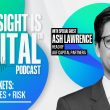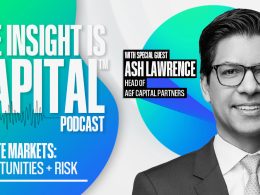by Brad Tank, Neuberger Berman
Rising inflation and rates could make the return of market volatility structural, not temporary.
Watching all of the great skating events in the Winter Olympics makes me wish I could spend as much time on the ice as I did as a kid growing up in Wisconsin. Of course, everything is cyclical—and watching the ponds and rinks melting was always the sad part of the spring thaw. That’s something to think about when, after years in the deep freeze, the global economy is warming up and the frictionless ice beneath financial markets is beginning to melt.
Mercury Rising
The mercury was rising again last week. Wednesday’s U.S. CPI data came out a little hotter than forecast.
That should not have come as a surprise. Breakeven inflation rates have been moving for seven months now. Inflation has featured in virtually all of our CIO Weekly Perspectives so far this year. It was in “Up for Debate” in our last Asset Allocation Committee Outlook; in our year-end Fixed Income Outlook, we said that the conditions for rising inflation were the strongest we’d seen in years; and my colleagues described those conditions in detail in a paper at the beginning of December.
Sure enough, the VIX did not spike to 50 again after last Wednesday’s print. Having said that, it hasn’t fallen back to its deep-freeze levels of 10–15, either, even after a few strong days of equity market recovery.
That makes sense to us. We think the shift to higher volatility is structural, not temporary, and directly related to expectations for higher inflation and higher interest rates.
Of course, inflation on the move introduces additional uncertainty into the valuation process for most asset classes. Importantly, it also yields less stability in the correlations across asset classes.
Friction in Short-Term Correlations
At Neuberger Berman, we spend a lot of time analyzing and forecasting cross-asset class and cross-sector correlations. As my colleague Ashok Bhatia explored in a recent paper, shifting correlations require a shift in our approach to building multi-asset class or, in the case of fixed income, multi-sector portfolios. It is a complex and nuanced topic, for sure, but we can make a few simple observations.
We have found that long-term correlations, measured over three or five years, have been highly dependent on the prevailing inflation regime. Low-inflation regimes have tended to yield a negative correlation between the prices of risky and risk-free assets, whereas high-inflation regimes have tended to yield a positive correlation.
Short-term correlations measured over periods of days, weeks or months are subject to a wider variety of changing factors, but inflation remains important. At these shorter time horizons, transitions between inflation regimes cause friction and instability.
We have been in a low-inflation, negative-correlation regime since the 2000–01 recession. We are now in a transition from an environment in which inflation clearly was not meeting central bank targets to one in which inflation will meet those targets—but could also exceed them.
Do we think central banks are behind the curve? It’s too soon to draw that conclusion. U.S. markets have certainly adjusted toward higher rate expectations, for example, but they have only gotten in line with what the Fed has been forecasting for months. The temperature is definitely rising, however, and that creates new uncertainty, which feeds into instability in short-term correlations.
A Bumpier Ride to a Healthier Destination
Stability in short-term correlations did as much to sustain low-volatility conditions as investors selling volatility and “buying the dips,” because these conditions created the illusion that risk was easily managed and that leverage could be safely applied to maintain returns. Instability in short-term correlations often leads to less confidence in risk management, moves to de-lever and heightened volatility.
It is important to remember that the move toward levels of inflation that are consistent with policymakers’ objectives is ultimately a healthy one. It is necessary if we are to return to normalcy—that is, with an environment in which central banks go back to the role they played before the financial crisis. But it is also part of the thaw in financial markets, in which the smooth ice of winter will cut up and melt, and make the going much bumpier beneath our skates. I saw it as a kid in Wisconsin, and I’m getting ready for it as an adult in the markets.
Copyright © Neuberger Berman















